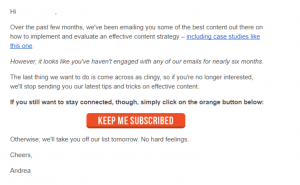Streamline your digital asset management process with expert tips on implementing practical file naming conventions.
A file naming convention is a necessary standard for digital asset management (DAM) implementation because it accomplishes several things. Naming conventions:
- Power DAM search functionality by providing search terms within names that do not require further tagging.
- Simplify automated workflow processes by providing directional text cues indicating “where” files should be stored within the DAM taxonomy.
- Indicate basic information about what is inside a file to any user within the organization without having to manually inspect it.
Below are four steps a DAM team can follow to implement their own file naming convention and enable fast, accurate ingestion and findability of DAM assets.
1. Understand how to make search faster in your DAM
Learn about document classification
It is often said that the highest form of flattery is theft, but let’s call it “borrowing.” Look to groups that need to incorporate complex documents into simplified enterprise search, including:
- The librarians (Harvard has a wonderful guide to the subject).
- The archivists (such as those at the United Nations).
- Scientific bodies (like the International Standards Organization).
Even a glance at sample conventions will give you an idea. Your documents will be much easier to divide and conquer.
Train yourself
Get up to speed on how to create search facets, shortcuts, links, useful tags and automated workflows within your DAM that will speed up ingest and archiving. Most of these processes are easy to learn. When time allows, create how-to documents, one-sheets and videos for your team to ensure everyone is prepared for an optimized DAM.
2. Understand how things are created
Learn how project managers create names/numbers for projects and files
Creative teams are usually organized by requesting departments, with project managers assigned to each and skilled providers sometimes serving multiple departments as needs scale up and down.
- What are the functions of the dates, asset types and other information they put into file names currently?
- Why does a certain part of the name come first, middle or last?
Project managers will be a wealth of information about and how files are usually named.
Collect current names and acronyms
There is no need to reinvent the wheel — and why would you want to? Existing acronyms can be reviewed for length and to ensure they don’t overlap.
As you review the list, ways to shorten and distinguish well-used names from those used less frequently will likely stand out. Check in with project managers while you’re compiling and pick their brains for others that may be used less frequently.
3. Understand how things are used
Meet with key stakeholders
Start with the organizational units that request assets from production. Then ask for a volunteer to serve as their DAM contact. These contacts can explain what happens when they receive their assets.
For example, brand websites display the majority of digital assets, and there are platform restraints and business process conventions for their disposition.
Narrow down to must-have requirements
Winnow department needs by bringing together commonalities. Encourage stakeholders to make sacrifices by focusing on what is truly the most important information. What naming elements can they do without or learn to live with, for the sake of a harmonized convention that is sensible across the wider organization?
For instance, our company’s digital marketing disposition drove decisions about what elements appear when. The publish date, for example, appears first because it affects how website assets are displayed programmatically. This date was less important to other departments but a key variable for marketing, production’s largest requestor.
4. Introduce the new convention as simply as possible
Make naming easy with a file name generator
Incorporate file naming into your project management tools and your DAM so that they are propagated to other SaaS platforms and the wider organization. A file naming generator can be created in Microsoft Excel or Google Sheets using text formulas. The file name can then be copied into a tool like Adobe Illustrator when a file is saved.
A name generator also helps team members learn the rhythm of the naming convention. Make sure there is also a master list that explains naming and lists all acronyms.
Train in small groups
Our team developed a final file naming convention over several calls with our stakeholder leaders. Throughout the calls, the team grew more comfortable with the DAM, its search functionality and how the convention would help search work faster in the long run.
After the convention was finalized, those stakeholders held training sessions with us and their individual teams. Sessions were greatly enhanced because of that cheerleader who was comfortable with the convention and understood why it was being rolled out.
Remember to adapt as needs change
Your naming convention will shorten as users learn ways to simplify the elements in names — asset types, project numbers, vendors, organizational units, sizes, where assets are sent, dates and more. Teams using “the new normal” will cause their knowledge and those of other individual employees to become “embedded” into assets so that they can be easily found again.
Soon, they will be suggesting changes to optimize file names, introducing new, better acronyms and other elements that will make the naming process easier and faster for everyone.
The post 4 steps to faster DAM search: Creating a file naming convention appeared first on MarTech.
MarTech(14)
Report Post





